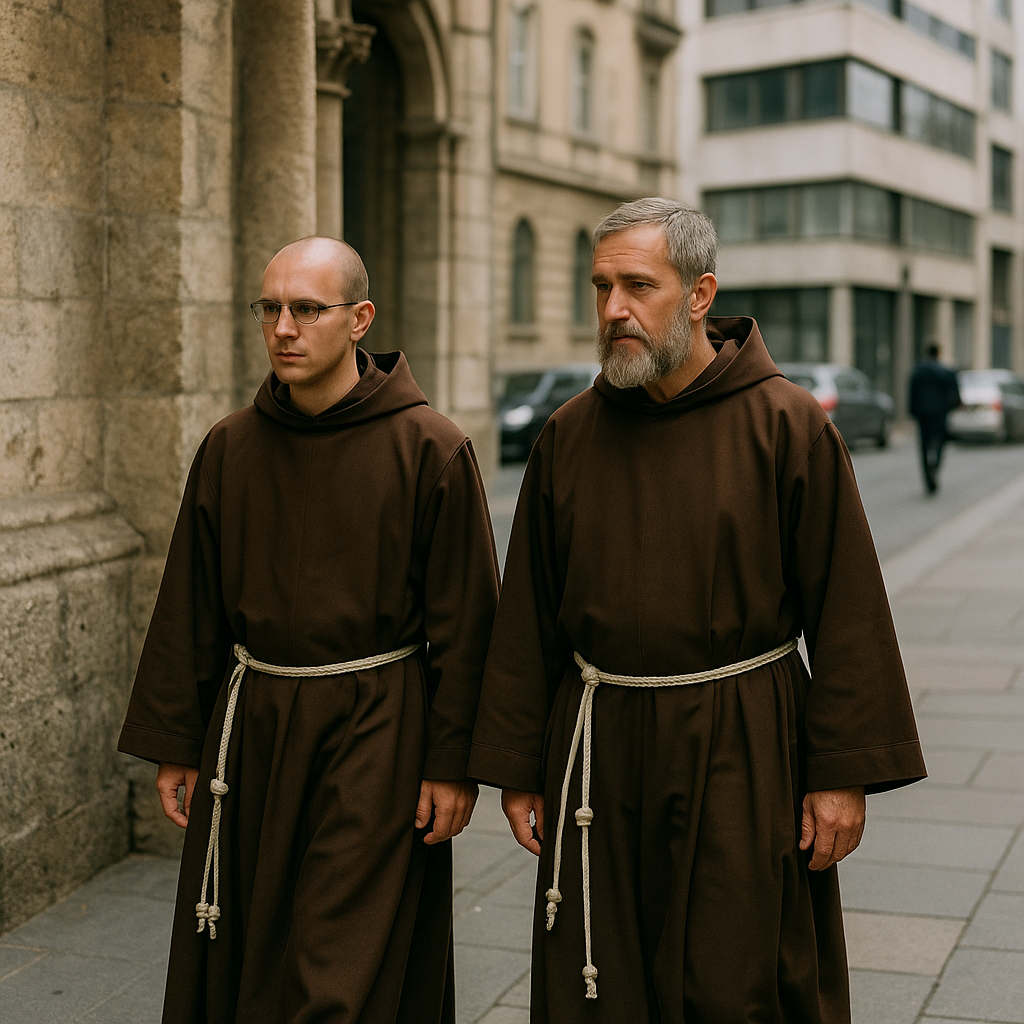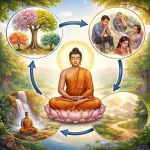Ancient Monastic Orders in Modern Times: Revival or Relic?
Across civilizations, monastic orders have long stood as the spiritual backbone of faith traditions. From Buddhist monasteries in Ladakh to Christian abbeys in Europe, from Jain upashrayas to Hindu mathas and ashrams, these institutions once shaped philosophy, art, education, and moral life. Yet in the modern world — dominated by technology, consumerism, and speed — the place of monasticism seems uncertain. Are these ancient orders mere relics of the past, or are they quietly experiencing a revival in the twenty-first century?
The Legacy of the Monastic Ideal
Monasticism, in its essence, is about withdrawal — renouncing worldly attachments to seek spiritual enlightenment or divine union. In India, this tradition goes back over 2,500 years. The Buddha’s Sangha laid the foundation for organized monastic life, setting strict ethical codes and communal living centered on meditation and simplicity. Jain monks and nuns, too, established disciplined orders emphasizing non-violence and asceticism.
In Hinduism, the Dashanami order established by Adi Shankaracharya in the 8th century created a network of monastic centers (mathas) that preserved philosophy, education, and spiritual practice. Similarly, Christian monastic orders such as the Benedictines and Franciscans in Europe became centers of learning, charity, and cultural preservation during the medieval period.
For centuries, these institutions stood as moral beacons — embodying discipline, contemplation, and service. But as modernity advanced, their relevance appeared to wane.
The Decline: When Silence Met the Modern World
By the mid-twentieth century, traditional monasticism faced decline across many cultures. Urbanization, secular education, and the lure of economic growth reduced interest in the monastic path. Families no longer encouraged children to become monks, nuns, or ascetics. In the West, monasteries that once bustled with hundreds of members saw their populations age and shrink. In India, too, many ashrams and mathas struggled to maintain relevance, often perceived as outdated or disconnected from modern realities.
Technology also transformed spirituality. With self-help gurus, online meditation courses, and instant access to teachings, the idea of lifelong monastic commitment seemed too rigid. Spiritual seekers began to prefer individual, flexible paths — weekend retreats, yoga studios, or online satsangs — over institutional discipline.
For a time, it appeared that monasticism might fade into history, preserved only in textbooks and pilgrim tales.
The Revival: New Monks for a New Age
Yet, in an unexpected turn, ancient monastic ideals are finding new life in the twenty-first century. Across traditions, there is a growing hunger for depth, silence, and authenticity in a world drowning in noise. Monasteries and ashrams have begun to reimagine themselves — not as isolated sanctuaries but as centers of renewal, education, and global outreach.
In India, Buddhist monasteries in Ladakh, Sikkim, and Bodh Gaya are witnessing an influx of young aspirants from both local and international backgrounds. Many come not just for religious vows but to learn mindfulness, compassion, and sustainable living. The Ramakrishna Mission, Art of Living, and Isha Foundation represent modern expressions of the monastic spirit — blending ancient discipline with social service and digital outreach.
Similarly, in the West, Christian monasteries have opened their doors to laypeople seeking spiritual retreats. The Benedictine practice of silence, prayer, and communal labor is drawing renewed attention as an antidote to burnout culture. Monastic tourism and interfaith retreats are bridging the gap between ancient vows and contemporary seekers.
Technology Meets Tradition
One surprising driver of this revival is technology itself. Many monasteries now maintain social media pages, YouTube channels, and podcasts where monks share discourses on meditation, morality, and simplicity. What was once confined within stone walls is now reaching millions globally.
For instance, Tibetan monasteries livestream pujas and teachings to global audiences. Hindu and Jain monks deliver discourses online, while Christian brothers share reflections through blogs and meditation apps. The paradox is striking — institutions rooted in renunciation are thriving by adapting to the very medium once seen as a distraction from spirituality.
This digital bridge has helped young people rediscover the monastic values of mindfulness, minimalism, and compassion in a language they understand.
Modern Relevance: Beyond Religion
The renewed interest in monasticism isn’t merely religious — it’s existential. In an age marked by anxiety, consumerism, and ecological crisis, the monastic values of simplicity, discipline, and contemplation have gained moral appeal. Psychologists now study monastic lifestyles to understand mental resilience and emotional balance. Corporations invite monks to teach mindfulness and ethics in leadership.
Environmental consciousness, too, finds deep resonance with monastic ideals. Many monasteries are embracing eco-friendly living — organic farming, waste reduction, and renewable energy — turning faith-based retreats into models of sustainable living. In this way, ancient monastic ethics are shaping modern environmental action.
Challenges of Continuity
Despite this revival, monastic life faces serious challenges. Recruitment remains low, and many ancient institutions depend on tourism or donations for survival. Balancing tradition with modernization can be delicate — how far can monasteries adapt without losing their contemplative essence?
Additionally, some face credibility crises when spiritual leaders are entangled in controversies, challenging the integrity of monastic ideals. True revival requires not just rebranding but a sincere return to the original virtues of humility, service, and purity.
Relic or Renewal?
The story of ancient monastic orders in modern times is neither one of complete decline nor naïve revival — it is one of transformation. The core impulse that gave rise to monasticism — the longing for peace and transcendence — remains alive, even if its forms are evolving.
In today’s fast-paced, hyper-connected world, the monastic voice serves as a gentle reminder of another way to live: slower, quieter, and more purposeful. Whether in mountain monasteries, city ashrams, or digital sanctuaries, the ancient quest for inner awakening continues.
Far from being relics, monastic orders are proving to be living archives of human wisdom, continuously adapting to guide a restless world toward stillness. The robe may look different, the vows may sound modern, but the message remains timeless — true freedom begins when the noise of the world gives way to the silence of the soul.
~Religion World Bureau









